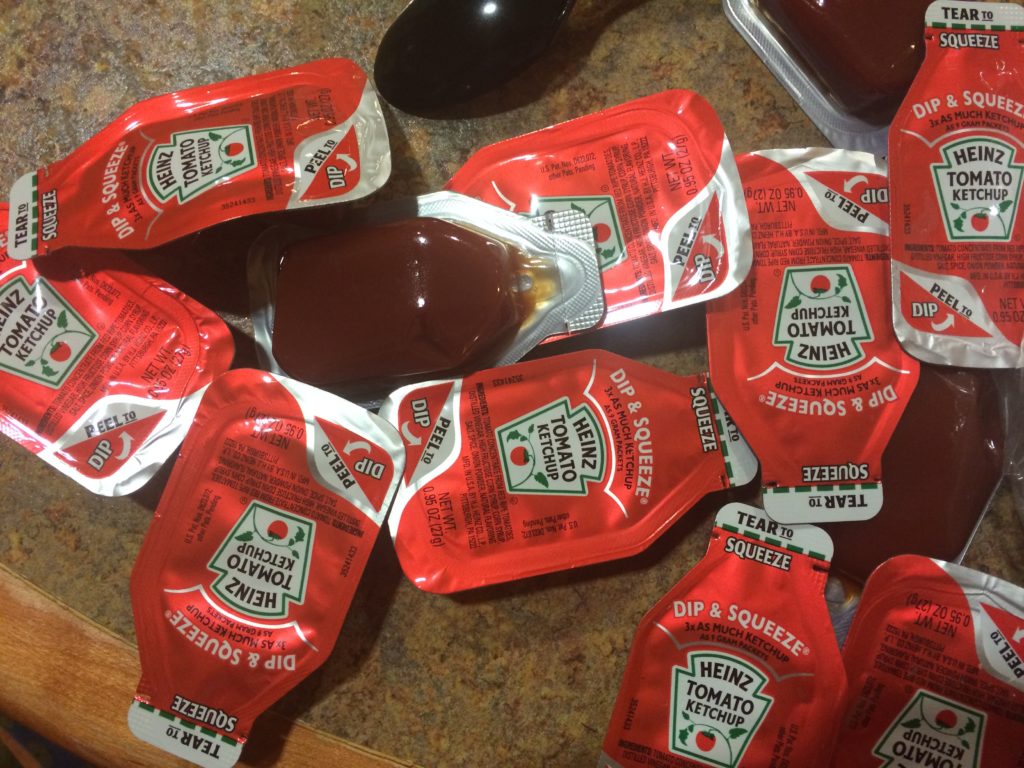American restaurants and consumers have taken Heinz’s catchphrase — ‘It Has to be Heinz’ — to heart as ketchup demand continues to spike and supply dwindles. The nationwide ketchup shortage, driven by accelerated food delivery trends, has prompted Kraft Heinz to raise ketchup production by 25 percent, The Wall Street Journal reported.
Rather than the bottled ketchup found in grocery stores, the ketchup shortage having a larger impact on the individual packages restaurants provide with pickup, takeout and delivery orders. The ketchup packets — also known as sachets in the restaurant industry — have more or less replaced the bottles regularly found on restaurant tables, even in locations where dine-in is permitted, as the CDC recommends restaurants limit their shared condiment containers.
The heightened demand for takeout and delivery along with a widespread effort to reduce commonly touched surfaces has driven the demand for ketchup sachets. With higher demand and less supply, prices for the single-use condiment packets rose by 13 percent in 2020. Heinz is hoping to mitigate any further ketchup shortages by adding multiple production lines in its factories with a goal of producing 12 billion sachets a year.
Steve Cornell, Kraft Heinz’s president of Enhancers, Specialty and Away from Home Business Unit, told USA TODAY that the company “made strategic manufacturing investments at the start of the pandemic to keep up with the surge in demand for ketchup packets driven by the accelerated delivery and take-out trends.” The company also scaled back on less popular products to prioritize ketchup sachets, but the supply still couldn’t meet the demand.
Related: This Is How Kraft Heinz Plans to Cut Costs by $2 Billion by 2024
In the meantime, restaurants are finding other ways to avoid serving fries without their classic condiment companion. For example, some restaurants are sourcing ketchup in bulk and filling up small plastic containers to include in takeout and delivery orders. Others are switching to generic brands. Fast food chains, such as Long John Silver’s, sought ketchup from secondary suppliers, costing the company an extra half-million dollars since individual packets are more expensive than buying in bulk.
The ketchup shortage is affecting the most-consumed condiment in the US restaurant industry, with around 300,000 tons sold to foodservice last year. The pandemic also helped push retail ketchup sales to over $1 billion last year, an increase of 15 percent from 2019. Heinz is at the forefront of the ketchup industry, holding about 70 percent of the US market for the condiment. Despite its massive foothold, Heinz was not prepared for the pandemic.
However, with plans to increase US production and bring back ketchup manufacturing to its Canadian factory this summer, Heinz is hoping to retain customer loyalty moving forward.
Xtalks reached out to Heinz for comment but has yet to hear back.
Of course, many other food items have become scarce during the pandemic, including yeast for baking and more recently, Grape-Nuts cereal. Supplies of these, and many other household items, dwindled at the beginning of the pandemic when consumers began hoarding and the food supply chain couldn’t adapt quickly enough.
The recent blockage of the Suez Canal by a massive cargo ship could also cause further food supply chain issues, resulting in potential shortages of coffee, for example.












Join or login to leave a comment
JOIN LOGIN